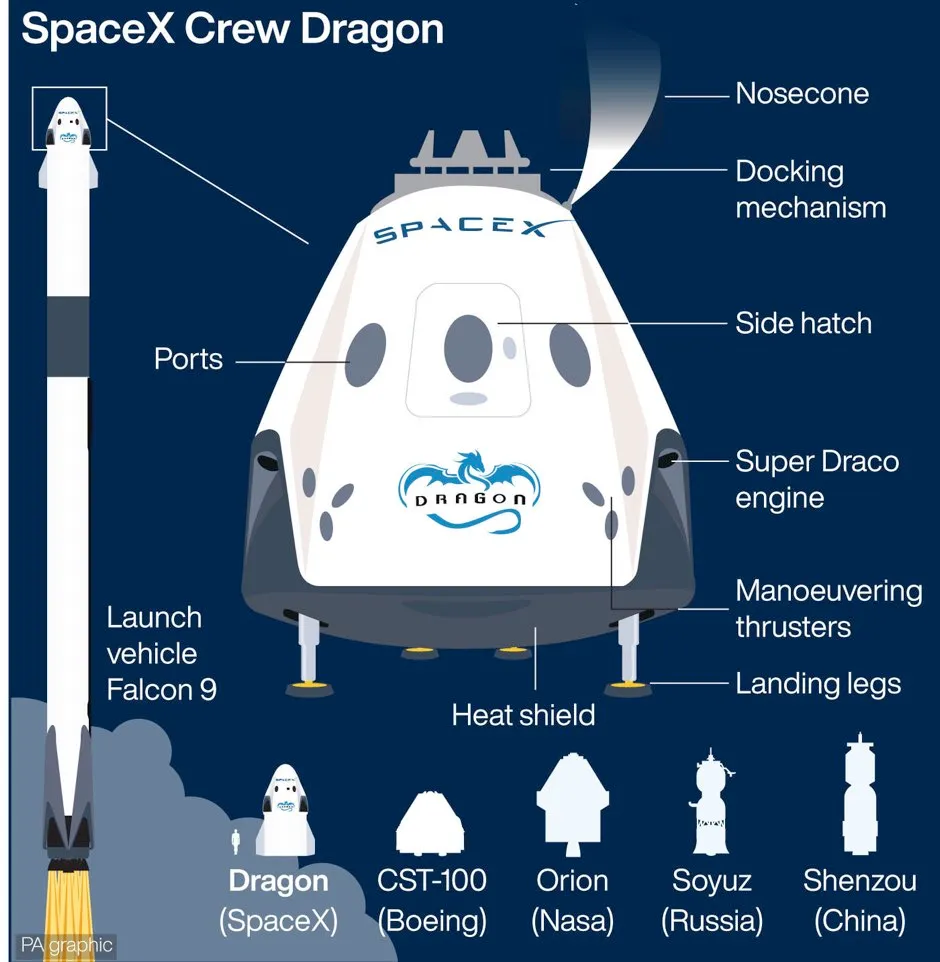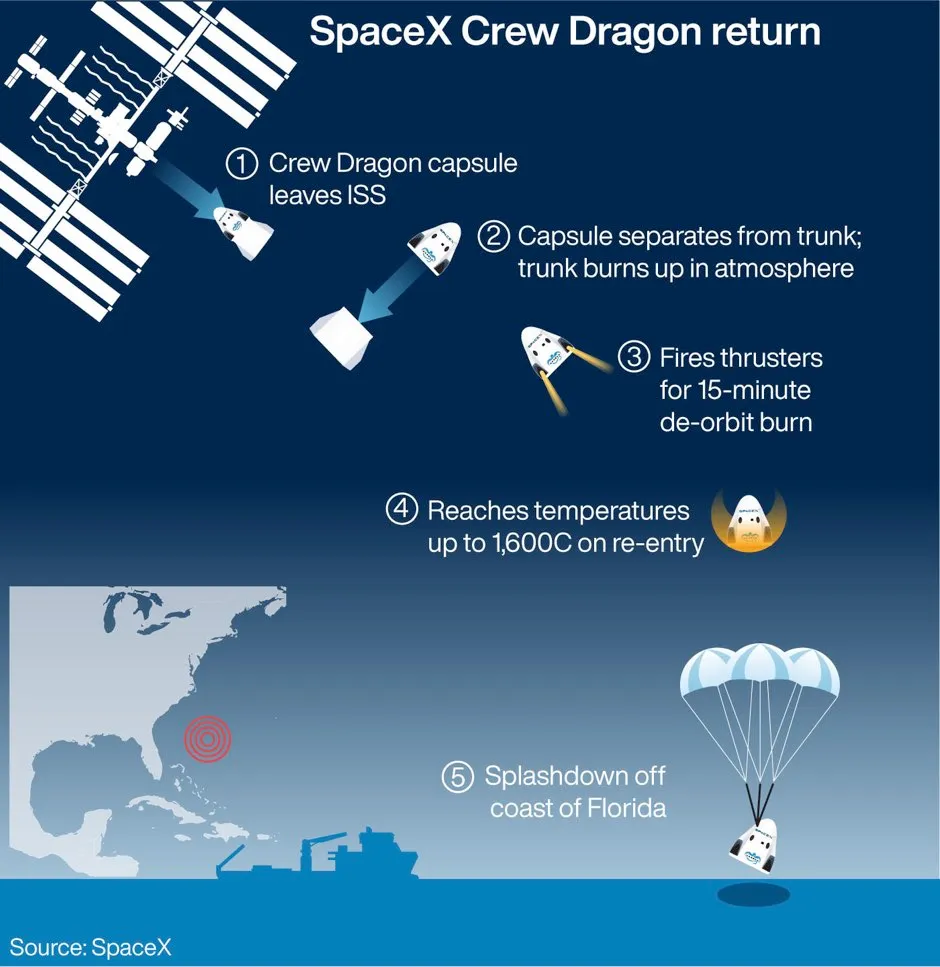NASA astronauts Doug Hurley and Bob Behnken have set foot on the International Space Station (ISS), more than two hours after docking with the orbiting laboratory.
The men had to wait for pressure and leak checks to be completed before exiting the Crew Dragon capsule.
They were greeted by fellow American Chris Cassidy, as well as two other space station residents, Russia cosmonauts Anatoli Ivanishin and Ivan Vagner, as they made their way out of their spacecraft.
Both are now officially members of the Expedition 63 crew.
Speaking to the astronauts from mission control in Houston, Texas, NASA administrator Jim Bridenstine said: “The whole world saw this mission and we are so, so proud of everything you’ve done for our country and, in fact, to inspire the world.”

Mr Hurley and Mr Behnken began their 19-hour journey on SpaceX’s Dragon capsule on top of the Falcon 9 rocket from Cape Canaveral in Florida on Saturday evening.
Although the space station orbits at less than 300 miles above the planet, it took almost a day for the Dragon to rendezvous with the moving laboratory.
The spacecraft had to perform a series of manoeuvres to raise its orbit to come close enough to dock at the space station.
The Dragon docked autonomously to a port on the bow section of the station’s Harmony module at 15:16 UK time, 16 minutes ahead of schedule.
According to NASA, this linkup occurred 262 miles above the China-Mongolia border.
Shortly after setting foot on the space station, Mr Hurley said: “It’s great to get the United States back in the crewed launch business and we are just really glad to be on board this magnificent complex.”
When asked whether the crew got enough sleep, Mr Behnken said: “We did get probably a good seven hours or so of opportunity for sleep and I did succeed at sleep and Doug did as well.
“The first night is always a bit of a challenge but the Dragon was a sleek vehicle and we had good airflow. So we had an excellent evening.”

The mission, named Demo-2, marks the first time NASA has launched astronauts from US soil in nine years.
SpaceX also made history by becoming the first private company to send humans into orbit.
Speaking on Saturday after the mission's launch SpaceX founder Elon Musk said: “I think this is something that should really get people right in the heart – anyone who has a spirit of exploration.”
He added: “I am really quite overcome with emotion – it’s kind of hard to talk really.
“It’s been 18 years working towards this goal. It’s really hard to believe that it’s happened.
“This is a craft made by humans, for humans, I think it’s something humanity should be proud about occurring on this day.”

But despite the successful launch of astronauts into low-Earth orbit, Mr Musk said was not keen to “declare victory yet”, emphasising that the “return can be more dangerous than the ascent”.
He added: “We need to bring them home safely and make sure that we are doing everything we can to minimise that risk of reentry.”
The aim of the mission is to demonstrate SpaceX’s ability to ferry astronauts to the space station and back safely.
It is the final major step required by SpaceX’s astronaut carrier, the Crew Dragon, to get certified by NASA’s Commercial Crew Programme for long-term crewed missions to space.

Mr Hurley and Mr Behnken have named their Dragon capsule Endeavour in a nod to Space Shuttle Endeavour, a retired orbiter from NASA’s Space Shuttle programme.
Mr Behnken said that during their time on the space station, they hope to put the spacecraft through its paces as well as assist other members of the crew in various other tasks.
Read more:
- Historic SpaceX launch a 'major milestone' in space exploration
- Space exploration: how might the next 50 years progress?
- After the International Space Station, what comes next?
He added: “Endeavour is going to get a lot of checkout over the next week or two here and hopefully we will be able to declare her operational.
“Doug and I will be able to take some burden off Chris and his crew mates Ivan and Anatoli, so that we can keep the space station operating at a peak possibility.
“So we are looking forward to contributing any way that we can and, like I said, trying to keep (the) space station as productive as possible.”
The mission is expected to last anything between one and four months.
What time zone do they use on the International Space Station?
Asked by: Richard O’Neill, Glasgow
International Space Station crews experience a sunset or a sunrise every 45 minutes. New members arrive acclimatised to Kazakhstan time, having departed from the Baikonur Cosmodrome.
With so much scope for chronological confusion, it’s no wonder that the ISS needs to be locked to a consistent time. The zone of choice is Coordinated Universal Time (UTC), which is equivalent to GMT.
Read more:
